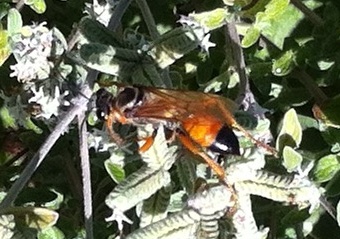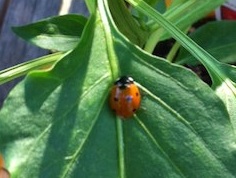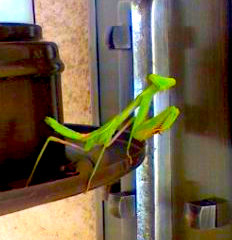Intermarkets' Privacy Policy
Donate to Ace of Spades HQ!
aceofspadeshq at gee mail.com
Buck:
buck.throckmorton at protonmail.com
CBD:
cbd at cutjibnewsletter.com
joe mannix:
mannix2024 at proton.me
MisHum:
petmorons at gee mail.com
J.J. Sefton:
sefton at cutjibnewsletter.com
Thursday Overnight Open Thread - January 8, 2026 [Doof]
Lonely Man Cafe
Trump Announces US Withdrawal from 66 International Organizations and Treaties
Marco Rubio Informs Congress That Trump Wants to Purchase Greenland
It Is Beyond Time for the Insurrection Act
Unexpectedly, US Trade Deficit Plummets to Lowest Level Since Global Depression Year 2009, Shattering "Expert" "Expectations"
Revealed: The ICE Agent Who Shot the Paid Antifa Disruptor When She Turned Her Car on Him... Had Been Run Over By An Illegal Alien Six Months Ago, and Dragged Down the Street With His Arm Trapped in the Car
CBS "News:" The Totally-Legitimate Non-Fraudulent Day Care "Targeted" by Nick Shirley Has Now Closed, For Unkown Reasons We Couldn't Possibly Speculate About
Nick Shirley's New Scoop: There Are 1000s of Fraudulent Minnesota (Somali) "Transport Companies" Taking Federal Money to Drive Around Patients, But the Patients are Phantoms
Jim Sunk New Dawn 2025
Jewells45 2025
Bandersnatch 2024
GnuBreed 2024
Captain Hate 2023
moon_over_vermont 2023
westminsterdogshow 2023
Ann Wilson(Empire1) 2022
Dave In Texas 2022
Jesse in D.C. 2022
OregonMuse 2022
redc1c4 2021
Tami 2021
Chavez the Hugo 2020
Ibguy 2020
Rickl 2019
Joffen 2014
maildrop62 at proton dot me
TBD
Saturday Gardening Thread: Bugs [Y-not and WeirdDave]
Greetings Gardeners! Welcome to your Saturday gardening thread.
Today's thread is brought to you by the RHINOCEROS BEETLE:
I have no idea why I decided to post that video... lol!
Earlier this week a friend and I went to the Red Butte Gardens at the University of Utah's campus. It was a gorgeous day and while we were there I spotted this guy buzzing around some Syrian oregano flowers:

I'd never seen anything quite like this wasp before, so I snapped a bunch of pictures and when I got home discovered that he was most likely a Great Golden Digger Wasp, which is a beneficial insect. (So is the rhinoceros beetle and its relatives, by the way.) 'Seemed like a good topic for the gardening thread so here we go!
GREAT GOLDEN DIGGER WASP
This is a type of predatory wasp that preys on grasshoppers and katydids. They are not particularly aggressive. (I can attest to this as I had to really hover over the wasp I was trying to photograph, something I would not have risked with a hornet or yellow jacket.) As far as I can tell, they only eat insects, but the one I spotted was hanging around flowers behaving as if it was foraging. I'm not sure how to interpret that.
Cognitive scientists are interested in studying these insects because of their genetically-programmed behavior:
Upon capturing a suitable prey, the female Great Golden will paralyze it with toxins in her sting. If the prey is small, she flies it directly to the nest. If prey is too large to transport aerially, the wasp will walk with it across the ground. The prey is clasped beneath her body by grasping its antennas with her mandibles.Once the Great Golden reaches the opening of her nest, she sets the paralyzed insect down. Leaving the prey outside, she goes into the tunnel for inspection. When satisfied that all is well, she comes partially out from the nest and again grasps the prey's antennas pulling it backwards into the nest's interior where it is deposited in a cell with its head turned to the bottom.
Though the prey is permanently paralyzed, it is able to eliminate feces and slightly move its antennas and mouthparts. Great Golden females close the nest each time prey is placed inside. When she re-enters for egg laying, she emits a set of buzzing sounds as she compacts the earth closing the entrance.
There are several behavioral aspects to this "self-programmed" wasp that continue to fascinate as humans tend to think such rote habits denote forethought and logic. Douglas Hofstadter and Daniel Dennett, two professors of Cognitive Science, created a controlled environment to study the Sphex routines more closely.
After the Great Golden dropped her prey and was inspecting her nest's interior, the professors moved the prey a few inches away from the opening. When the wasp emerged ready to drag the prey in, she found it missing. Quickly locating the prey, the professors believe her "behavioral program had been reset" as they found that, once again, she dragged the prey back to the threshold of the nest, dropped it and repeated the nest inspection procedure.
During one study, this was done 40 times, always with the same result. This test can be replicated again and again, with the Sphex never seeming to notice what is going on, never able to escape from its genetically programmed sequence of behaviors.** The wasp never "thinks" of pulling the prey straight in, but continually drops it outside until she is done with her nest inspection.
**Hmmm, reminds me of the RNC.

LADY BUG (officially called a "Lady Beetle")
I think most people realize that lady bugs are "good" insects to have in your garden. Your local garden center may even sell them. If not, you can buy them online. (I did this a couple of years ago to rescue a flowering plum tree that was inundated with aphids and they did a great job.)
Lady Beetles belong to the family Coccinelladae and their good reputation is well-earned. Most of the 450 native and introduced North American species are voracious predators of destructive plant-eating insects such as aphids and scales. In fact, their habitat is determined by what they eat.Lady Beetles can be found on any crop that is susceptible to aphids: vegetables, grains, legumes, strawberries and tree crops. Females even lay their eggs as close as possible to aphid colonies. Lady Beetles will also consume mites, moth and beetle eggs, thrips, pollen and nectar.
Various species of Coccinellidae share many characteristics. Most are dome-shaped and quite small (1mm to 10mm or 0.63/16 to 6.30/16 inch). While color and patterns vary from species to species, most tend to be variations of red, orange, or yellow with black. Some are simply black.
The life cycles are quite similar, too. Most Lady Beetles begin life as one of a small cluster of tiny (1mm or 0.63/16 inch) spindle-shaped cream, yellow, or orange eggs laid in protected sites on stems and leaves. In about a week, the eggs hosta into alligator-like larvae with 3 pairs of prominent legs.
The larvae are often gray or black with yellow or orange bands or spots. After 20-30 days, the larvae pupate, then emerge as adults in another 3-12 days, depending on temperatures and species. Adults may live only a few months to more than one year.
Just how effective are Lady Beetles with pest control? The Convergent Lady Beetle eats its own weight in aphids as a larvae and consumes up to 50 a day as an adult. Its cousin, the Seven-spotted Lady Beetle adult dines on several hundred aphids daily, while the larval form eat may 200-300 as it develops.
If you want to attract lady bugs to your garden, there are some plants that you can keep that the little gals like, including marigold, sweet alyssum, and yarrow. Although lady bugs are best-known as aphid-eaters, it turns out that the adults must eat some pollen in order to be able to reproduce.

PRAYING MANTIS
These are my favorite insects by far. Seriously, I would keep them as pets if it were considered acceptable behavior! I'm pretty sure when I was little I saw some nature show about praying mantises and was completely hooked on these creatures. Here are some things you may or may not know about them:
Mature adults usually live from spring to fall at which time they mate. Within a few weeks after copulation, a female praying mantis usually die. The male literally loses his head during the mating process for the female simply bites it off and eats it. While this behavior is routinely observed in the laboratory, researchers think it is much rarer in the wild. Maybe these cannibalistic actions help explain why mantids are territorial loners.Mother Nature has gifted the mature praying mantis with a number of adaptations that make it a fearsome hunter. Very unusual in the insect world, the mantid's elongated thorax functions like a neck, enabling the triangular head to turn almost 360 degrees. This feature combined with its two huge compound eyes and three single eyes, give the praying mantis a real advantage in spotting its next dinner. Each foreleg is modified to fold back like a pocket knife, with serrated, spiny edges that end with sharp hooks: all the better to catch and hold a squirmy lunch desperate to get away.
Another advantage for the praying mantis is its coloring. Not only does the mantid's green to grayish-brown offer excellent camouflage in the plant foliage where it prefers to hunt, this color can be somewhat altered by an individual to better match its specific surroundings. The praying mantis will sit and wait or very slowly stalk its prey, sometimes swaying back and forth to mimic plants moving in a breeze, only to become lightning fast when it snares its unfortunate target.
It immediately uses its strong mouthparts to start chewing the still-living prey. Sometimes, the mantid will bite its victim on the neck first, thus paralyzing the insect and avoiding its escape. It is the only predator that feeds at night on moths and is fast enough to catch flies and mosquitoes that venture within its grasp.
All of these characteristics combine to make mantids formidable and almost perfect predators. Why the "almost" qualification? One problem is that the entire family is indiscriminate in what they eat.
While they consume pests such as flies, crickets, moths and mosquitoes, they also devour other beneficial insects, including each other. Larger species (especially those in tropical areas) will chow down on lizards, small mammals and even hummingbirds.
Yikes!
Of course, there are many other beneficial insects. The folks at Texas A & M have compiled an extensive set of web pages describing the ones found here in the U.S.
In addition, there are commercial sources for beneficial insects and many botanic gardens hold classes on how to integrate them into your gardening plan.
What are your favorite garden "bugs?"
And now, here's your scintillating co-host, Weirddave...
This is the guy who needs to be doing the garden thread:
Seems to me that this is definitely "for the love of gardening". This seems like an awful lot of work for something that sells for a dollar a pound at Giant.
Part 2:
Maybe carrots aren't your thing. Perhaps you'd prefer onions. I managed to fail at growing onions this year, it doesn't help that the video starts by saying its almost impossible to not grow onions. It's probably because I failed to water my tiller (3:36).
Potatoes?
Ahh, screw it, I'm not having luck with any of this stuff. Next year I'm going to plant rabbits.
Y-not: Thanks for those videos, WeirdDave!
To close things up, how about a survey? I'd like to know what you'd like to see happen with the gardening thread during the winter months:
As always, send suggestions, complaints, pictures, questions, and kegs of beer to me on Twitter at MoxieMom or to my gee ma il account, bailesworth.
What's happening in YOUR garden right now?
Berserker-Dragonheads Division : "That's awesome, Bers! LOL. Happy for you. (Envi ..."
Common Tater: "Always think of Gordon Cooper waiting out launch h ..."
Debby Doberman Schultz: "Night JQ, I am out too, sweet dreams Horde. ..."
JQ: "Night, Horde. Tomorrow's another day..... ..."
JQ: "That's awesome, Bers! LOL. Happy for you. (Envi ..."
Barkingmad59, wandering lurkette: "Praying that LA stays calm the next few days. Mr. ..."
Debby Doberman Schultz: "JQ, the left has succeeded in ripping apart famili ..."
Berserker-Dragonheads Division : "I dunno, Debby. I wonder too, if my own sister vie ..."
Berserker-Dragonheads Division : "Oh I have lots of complaints, but I am doing fine. ..."
JQ: "*shrug* I dunno, Debby. I wonder too, if my own ..."
Debby Doberman Schultz: "Oh I have lots of complaints, but I am doing fine. ..."
Thursday Overnight Open Thread - January 8, 2026 [Doof]
Lonely Man Cafe
Trump Announces US Withdrawal from 66 International Organizations and Treaties
Marco Rubio Informs Congress That Trump Wants to Purchase Greenland
It Is Beyond Time for the Insurrection Act
Unexpectedly, US Trade Deficit Plummets to Lowest Level Since Global Depression Year 2009, Shattering "Expert" "Expectations"
Revealed: The ICE Agent Who Shot the Paid Antifa Disruptor When She Turned Her Car on Him... Had Been Run Over By An Illegal Alien Six Months Ago, and Dragged Down the Street With His Arm Trapped in the Car
CBS "News:" The Totally-Legitimate Non-Fraudulent Day Care "Targeted" by Nick Shirley Has Now Closed, For Unkown Reasons We Couldn't Possibly Speculate About
Nick Shirley's New Scoop: There Are 1000s of Fraudulent Minnesota (Somali) "Transport Companies" Taking Federal Money to Drive Around Patients, But the Patients are Phantoms
Paul Anka Haiku Contest Announcement
Integrity SAT's: Entrance Exam for Paul Anka's Band
AllahPundit's Paul Anka 45's Collection
AnkaPundit: Paul Anka Takes Over the Site for a Weekend (Continues through to Monday's postings)
George Bush Slices Don Rumsfeld Like an F*ckin' Hammer
Democratic Forays into Erotica
New Shows On Gore's DNC/MTV Network
Nicknames for Potatoes, By People Who Really Hate Potatoes
Star Wars Euphemisms for Self-Abuse
Signs You're at an Iraqi "Wedding Party"
Signs Your Clown Has Gone Bad
Signs That You, Geroge Michael, Should Probably Just Give It Up
Signs of Hip-Hop Influence on John Kerry
NYT Headlines Spinning Bush's Jobs Boom
Things People Are More Likely to Say Than "Did You Hear What Al Franken Said Yesterday?"
Signs that Paul Krugman Has Lost His Frickin' Mind
All-Time Best NBA Players, According to Senator Robert Byrd
Other Bad Things About the Jews, According to the Koran
Signs That David Letterman Just Doesn't Care Anymore
Examples of Bob Kerrey's Insufferable Racial Jackassery
Signs Andy Rooney Is Going Senile
Other Judgments Dick Clarke Made About Condi Rice Based on Her Appearance
Collective Names for Groups of People
John Kerry's Other Vietnam Super-Pets
Cool Things About the XM8 Assault Rifle
Media-Approved Facts About the Democrat Spy
Changes to Make Christianity More "Inclusive"
Secret John Kerry Senatorial Accomplishments
John Edwards Campaign Excuses
John Kerry Pick-Up Lines
Changes Liberal Senator George Michell Will Make at Disney
Torments in Dog-Hell
The Ace of Spades HQ Sex-for-Money Skankathon
A D&D Guide to the Democratic Candidates
Margaret Cho: Just Not Funny
More Margaret Cho Abuse
Margaret Cho: Still Not Funny
Iraqi Prisoner Claims He Was Raped... By Woman
Wonkette Announces "Morning Zoo" Format
John Kerry's "Plan" Causes Surrender of Moqtada al-Sadr's Militia
World Muslim Leaders Apologize for Nick Berg's Beheading
Michael Moore Goes on Lunchtime Manhattan Death-Spree
Milestone: Oliver Willis Posts 400th "Fake News Article" Referencing Britney Spears
Liberal Economists Rue a "New Decade of Greed"
Artificial Insouciance: Maureen Dowd's Word Processor Revolts Against Her Numbing Imbecility
Intelligence Officials Eye Blogs for Tips
They Done Found Us Out, Cletus: Intrepid Internet Detective Figures Out Our Master Plan
Shock: Josh Marshall Almost Mentions Sarin Discovery in Iraq
Leather-Clad Biker Freaks Terrorize Australian Town
When Clinton Was President, Torture Was Cool
What Wonkette Means When She Explains What Tina Brown Means
Wonkette's Stand-Up Act
Wankette HQ Gay-Rumors Du Jour
Here's What's Bugging Me: Goose and Slider
My Own Micah Wright Style Confession of Dishonesty
Outraged "Conservatives" React to the FMA
An On-Line Impression of Dennis Miller Having Sex with a Kodiak Bear
The Story the Rightwing Media Refuses to Report!
Our Lunch with David "Glengarry Glen Ross" Mamet
The House of Love: Paul Krugman
A Michael Moore Mystery (TM)
The Dowd-O-Matic!
Liberal Consistency and Other Myths
Kepler's Laws of Liberal Media Bias
John Kerry-- The Splunge! Candidate
"Divisive" Politics & "Attacks on Patriotism" (very long)
The Donkey ("The Raven" parody)

